


HR tools are invaluable for all businesses with more than a handful of employees. When it comes to improving efficiency, performance management, or any kind of development, the need for great HR tools surfaces.
Not sure which HR tools your business needs? In this post, we cover eleven of the best HR tools across various purposes, from retention to HR management and training to rewards. For each, we detail the purpose, intended company size, significant benefits, and any downsides.
Your mileage with each tool will vary depending on the size of your team, business, and — not least — growth plans.
Praisidio – Employee retention tool
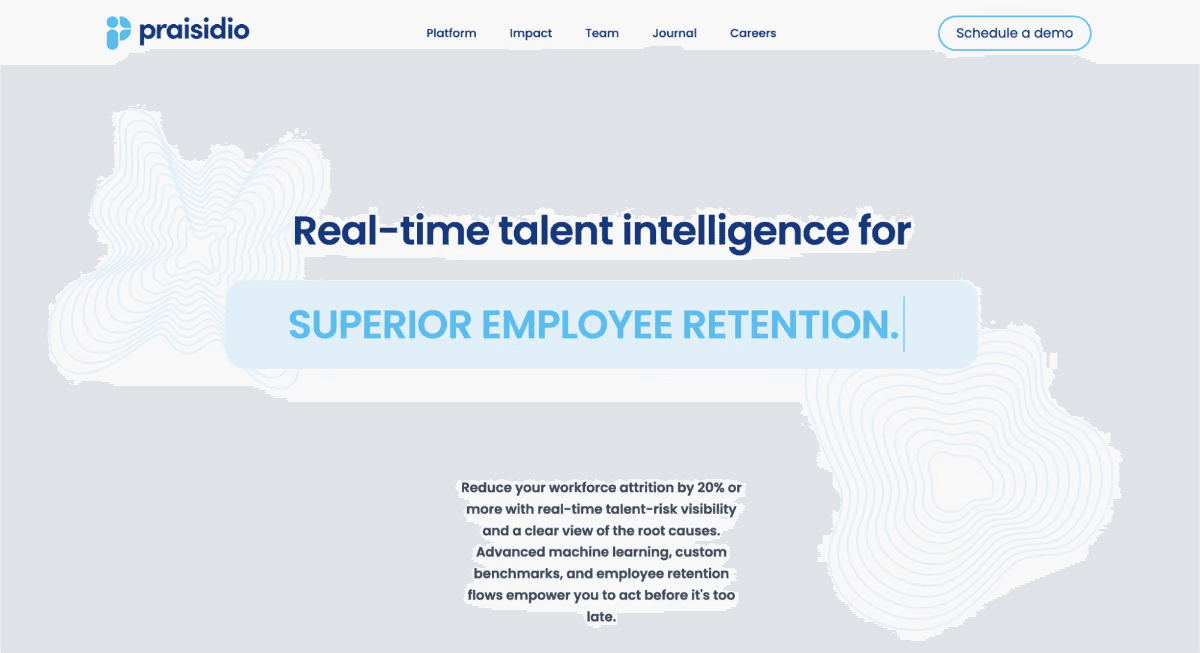
If you’re looking to retain talent and prevent permanent hiring and training, Praisidio is your HR tool. In the age of the 'Great Resignation' and quiet quitting, HR teams need a better way to identify which employees are a flight risk and what exactly is needed to retain them.
Praisidio uses machine learning (ML) to identify exactly which employees are likely to resign in the next 6 months and gives actionable workflows to make retention easy. Praisidio can save you thousands a year in lost productivity, hiring costs, and training.
What the tool is for:
Real-time insights into employee flight risk at scale
Biggest benefits:
Actionable workflows to help you retain at-risk employees.
Which size company will benefit most:
From medium-sized to enterprise level. The more employees, the more this tool will save you.
Downsides to the HR tool:
Praisidio isn’t an all-encompassing HR platform. You’ll need more HR tools in your toolkit on top of this one. If you’re already working with other tools, their data can help you benefit from Praisidio faster.
BambooHR – HR platform for small and medium businesses
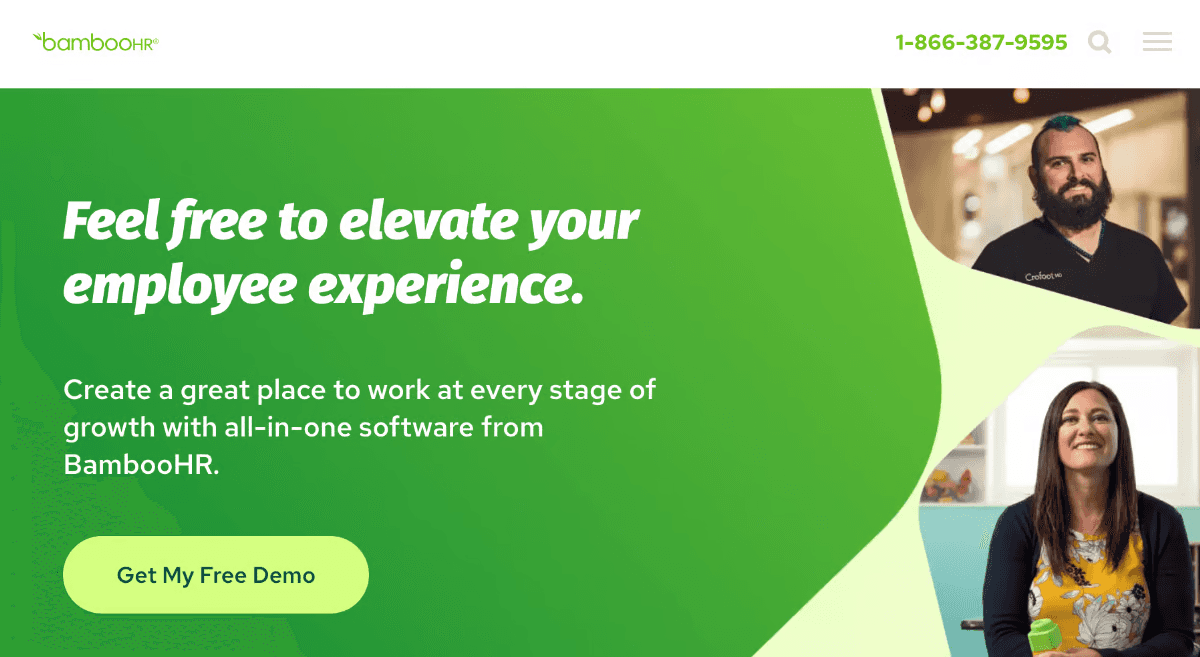
If you’re looking for an all-in-one HR toolkit, you’ll probably want to check out BambooHR before anything else. It’s an award-winning HR platform developed for small and medium-sized businesses. BambooHR includes software to help your HR department hire, onboard, evaluate, and improve time management.
One thing that sets BambooHR apart from most HR tools is that the platform puts an emphasis on humans. Not just the humans in your organization, but also the ones on their own team. They’ve got a quirky approach to communication and offer real human support when you need it.
What the tool is for:
People data and analytics, hiring and onboarding, performance assessment, and satisfaction reporting.
Biggest benefits:
Simple dashboards, user-friendly interface for employees, and a goal of setting you free to focus on your people.
Which size company will benefit most:
Small to medium-sized businesses that have HR employees or an actual HR department but no enterprise resource planning software that offers HR tools.
Downsides to the HR tool:
BambooHR is one of the more expensive HR tools. It’s also lacking a little on benefit administration features in comparison to some other HR tools.
Trainual – HR tool for onboarding and training
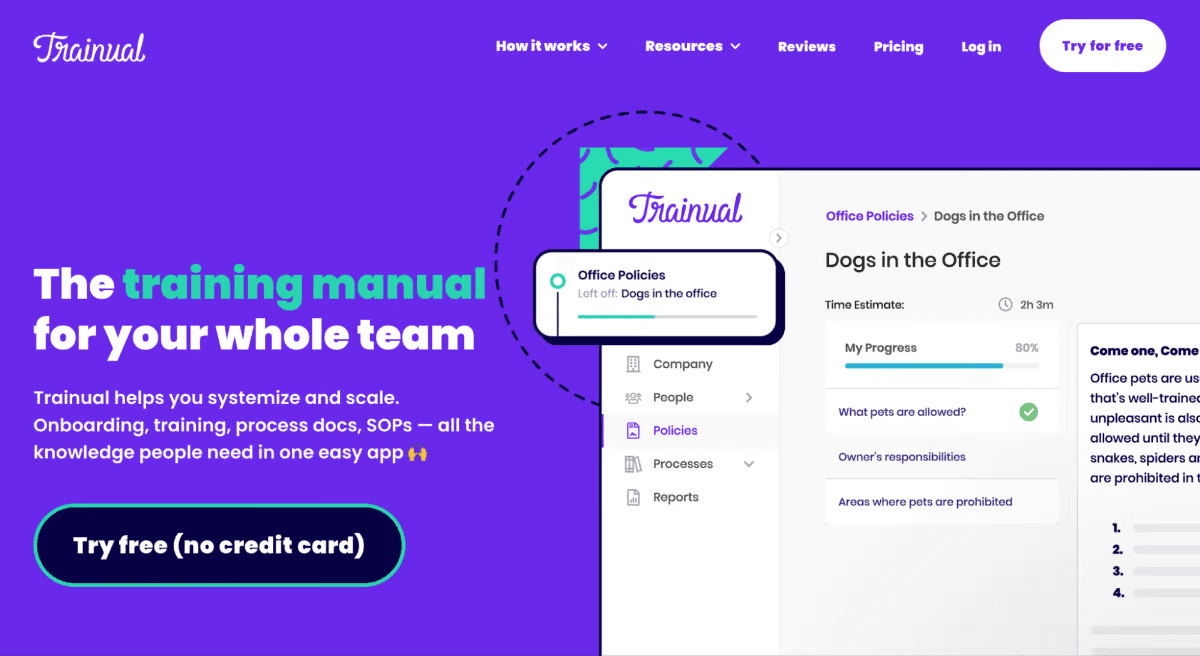
Trainual calls itself the training system that wants you to spend less time training. This HR tool promises that it will help you scale your business without time-consuming onboarding processes. HR employees use this tool to build their training system and save time. Onboarding and training can be done at the preferred speed of the individual employee.
What the tool is for:
Onboarding new employees with a consistent approach, training existing employees, and keeping track of all SOPs.
Biggest benefits:
HR employees can hand off some of the onboarding processes to the tool. Onboarding and introduction to company culture will be consistent regardless of workloads in HR. Employees can watch at their own pace, and refer back to the resources.
Which size company will benefit most:
Small businesses.
Downsides to the HR tool:
Some features have bugs that need fixing. Limited assessment questions. Needs more templates.
Convert Calculator – Time card and payroll calculator
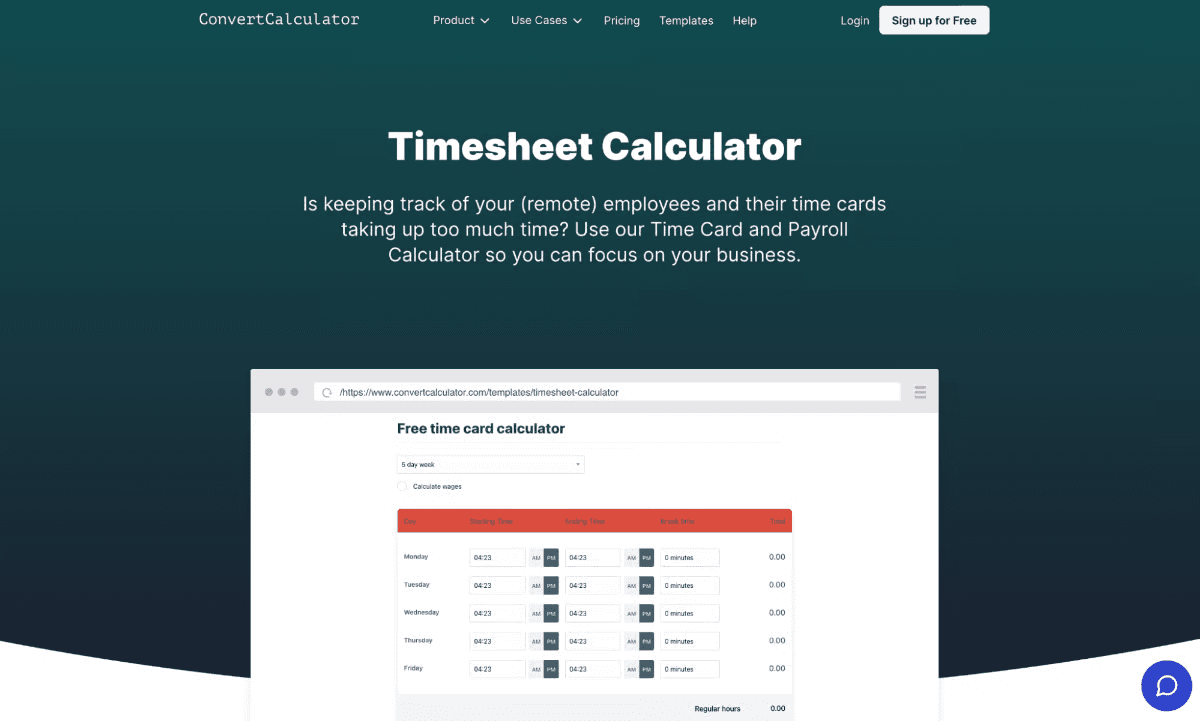
It can take a lot of effort to implement effective time tracking for employees — especially for remote teams. Convert Calculator calls itself The Swiss Army knife of calculation forms. Convert Calculator also offers embedded calculations that can be useful for lead capturing. But one of their most relevant HR tools is the Timesheet Calculator.
Timesheet Calculator makes it easy to record time spent on each task or client project. This is useful for businesses that bill their clients hourly — even with varying prices for each employee. With built-in formulas, the time cards also make it easy for HR to calculate wages based on individual hourly rates, overtime rates, and other metrics.
What the tool is for:
Time tracking and calculations.
Biggest benefits:
Makes it easy for each employee to track their time. Also eases salary calculations and billing clients hourly with precise documentation. Integrates with many CMS and other tools.
Which size company will benefit most:
From freelancers to medium-sized businesses.
Downsides to the HR tool:
Some cloning and merging functions could be added to help optimize the workflow.
Loom – Video messaging tool

Loom promises us the power to cut meetings by 29%. Any message that does not require real-time feedback or discussions can be replaced by a short async video message. Management — or whoever has an important message to share — can record a short video and share it with a single link. Colleagues can watch at their own pace, and you can forget about juggling calendars for a slot that fits everyone.
What the tool is for:
Short video messages with briefings, feedback, walkthroughs, and more.
Biggest benefits:
Saves time managing calendars — especially across time zones. Can replace some meetings and shorten others. Combines webcam recording and screen capture.
Which size company will benefit most:
Enterprises with teams distributed across several locations, countries, and time zones.
Downsides to the HR tool:
Limited and sometimes buggy editing features.
Spark Hire – Video interview software
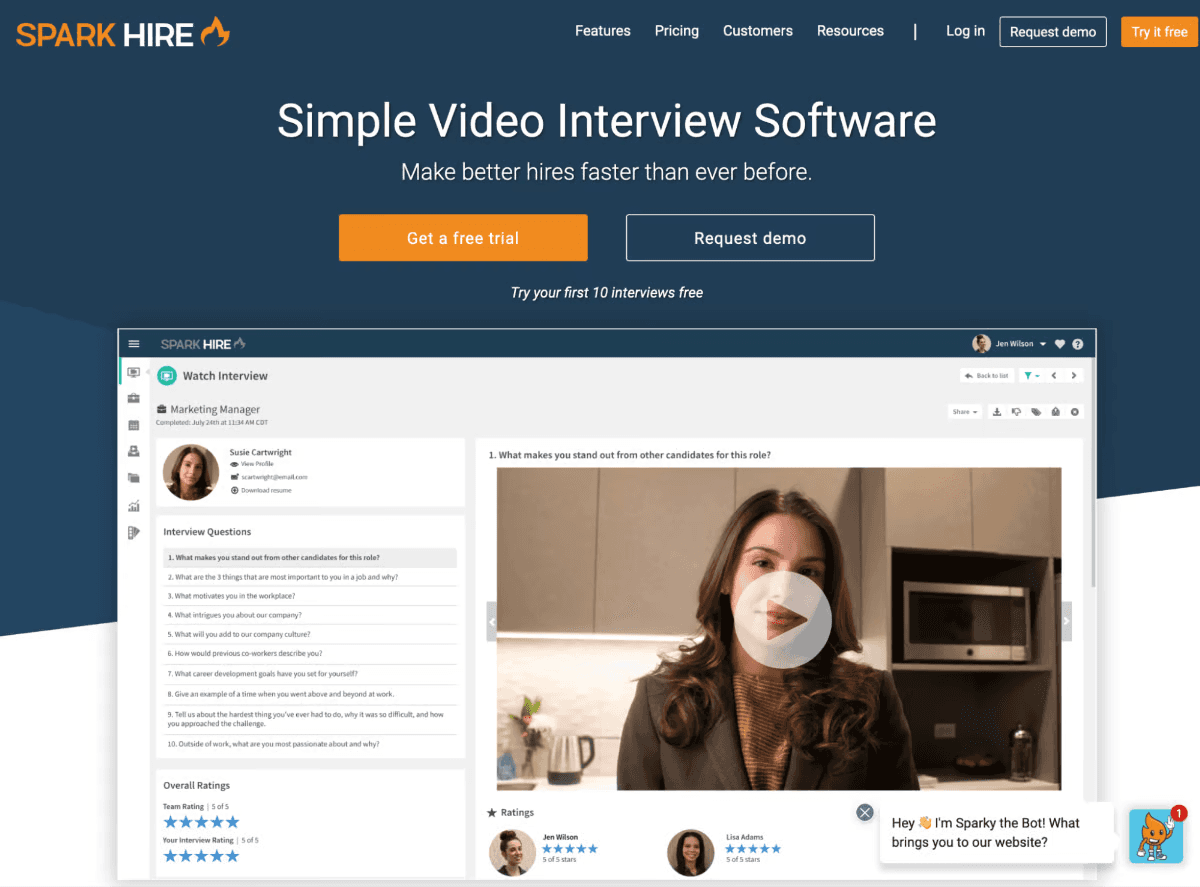
Spark Hire is a great HR tool for businesses with distributed or remote teams. The platform lets HR employees hire better with less bias and friction. The dashboard lets the HR team get a quick overview of other candidates or the interviewee in question as the recruitment progresses.
You can review previous video interviews ahead of the second or third interview. Candidates can record themselves answering your questions if you can’t meet on a live call. And none of you need to worry about saving, exporting, or sharing video files.
What the HR tool is for:
Video interviews for better and faster hires.
Biggest benefits:
Makes your talent pool bigger. Centralizes all interviews, notes, and questions for future use. Lets you replace live video calls with pre-recorded messages.
Which size company will benefit most:
Medium-sized businesses to large enterprises that need specialized talent.
Any downsides to the HR tool:
Some technical issues can make it hard for candidates to submit videos or result in poor sound quality.
WorkTango – Employee Experience Platform

The employee experience platforms Kazoo and WorkTango have come together under the WorkTango brand. The purpose of the platform is to help businesses retain their talented employees. It facilitates individual goal-setting, OKR tracking, feedback, insights, and rewards.
HR teams can connect individual goals and departmental goals to make the overall business goals easier to achieve. As feedback is shared, and points are registered, it’s easier to keep track of the progression of each employee without bias.
What is the HR tool for: A complete employee experience platform.
Biggest benefits: Eases the maintenance of a strong company culture and recognition of employee efforts.
Which size company will benefit most: From medium-sized businesses to enterprises with hundreds or thousands of employees.
Downsides to the HR tool: Workflow could be more intuitive, and analytics could use more options for customization.
Monday.com – Employee management system
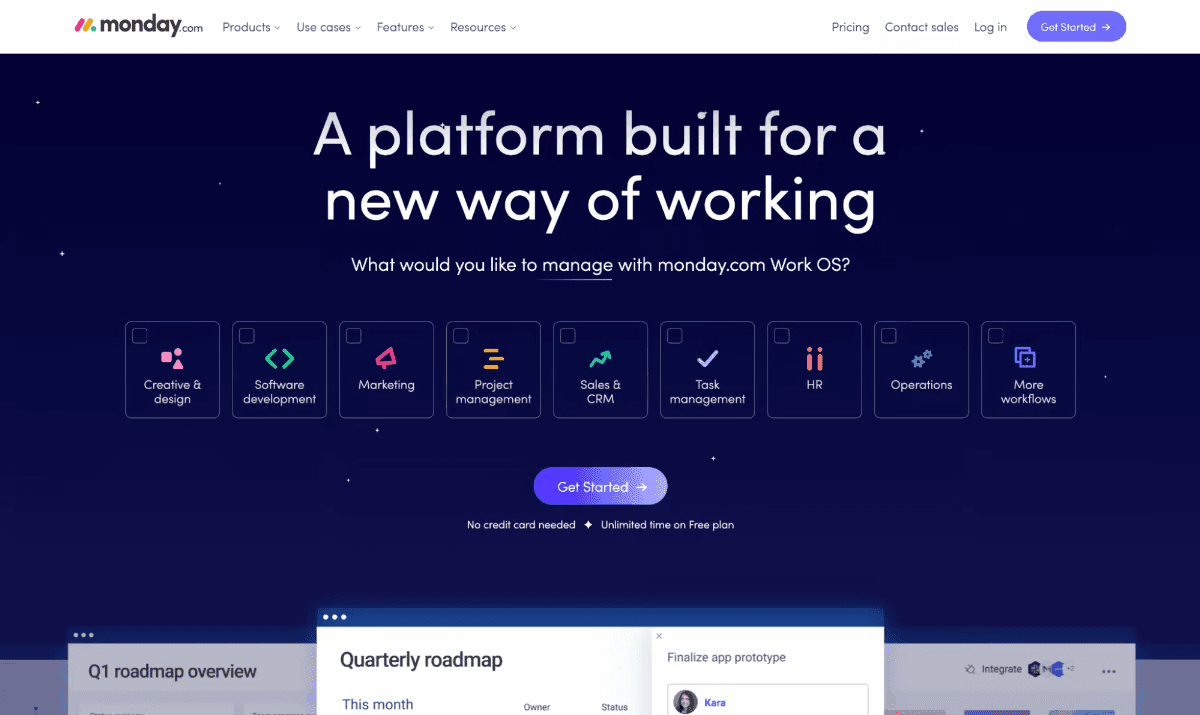
Monday.com is a suite of products — a work OS – including work management, CRM, and employee development. As an HR tool, Monday.com can gather data from other interfaces as well as several embedded forms to power employee development.
Tracking progress on projects and goals can be coupled with your own rewards plan. Hiring and onboarding can easily be set up and managed as projects with successful workflows.
What the tool is for: Employee management and development.
Biggest benefits: Integrates with virtually any tool. Offers intuitive dashboards and easy creation of workflows.
Which size company will benefit most: From small businesses to large enterprises.
Any downsides to the HR tool: Takes time to set up and release full potential.
Confetti – Team building experiences
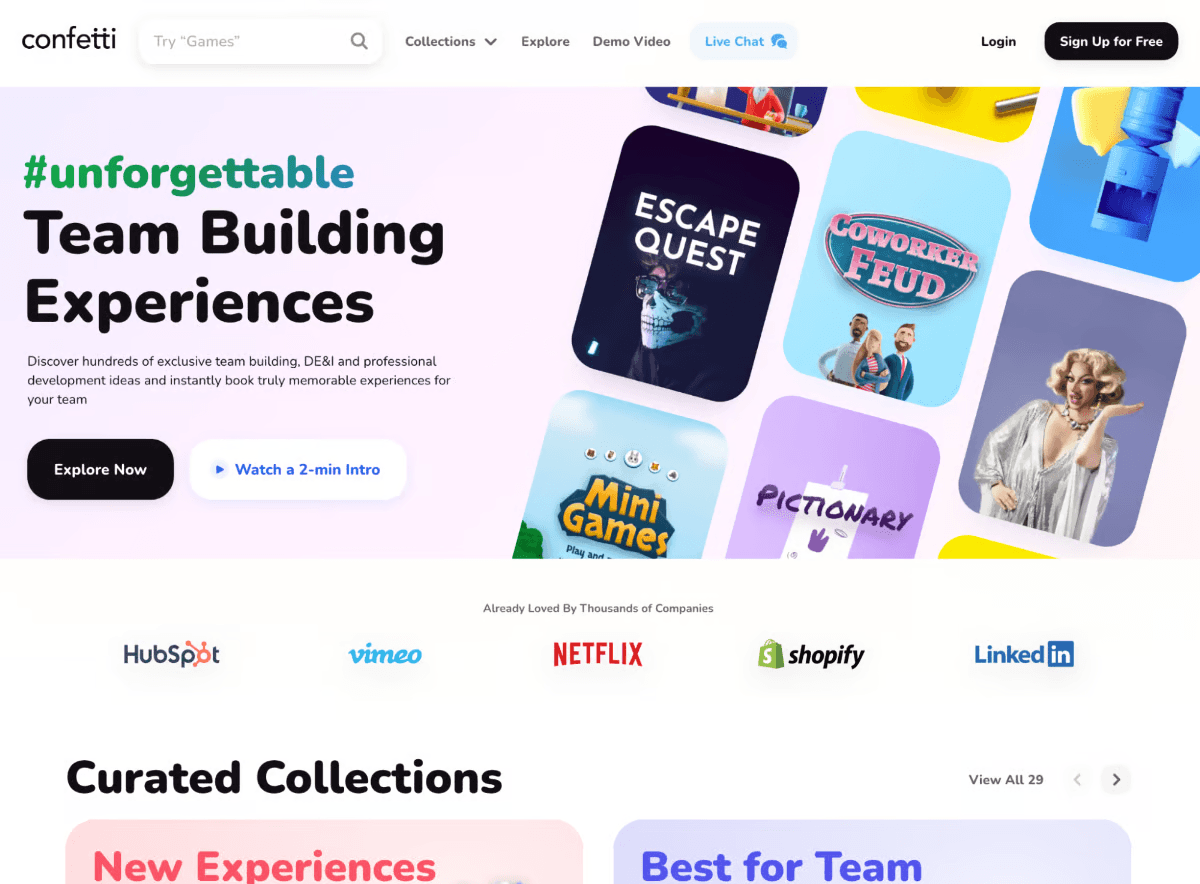
Nurturing company culture between remote teams can be a big challenge. Confetti is the platform that makes virtual team building a lot more interesting. Cook, work out or meditate together to wind down and stay sane between busy periods.
Unbox the gingerbread house or mixology kit simultaneously and share the excitement with your colleagues.
What the tool is for: Team building experiences for remote teams.
Biggest benefits: An affordable way to bring remote teams together.
Which size company will benefit most: Medium to large-sized businesses with remote, partly remote, or distributed teams.
Downsides to the HR tool: Best for tech-savvy employees.
Hoppier – Rewards platform
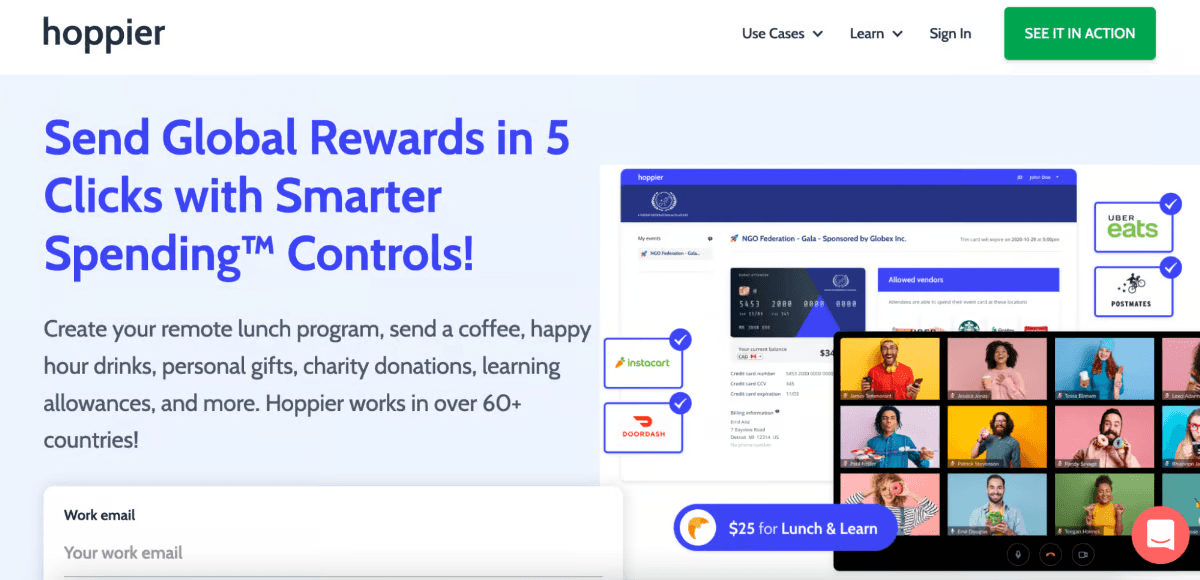
If you’re ready to try something other than managing the Amazon wish lists of all your employees, Hoppier could be what you need. This global rewards platform lets you send a large variety of rewards to employees.
Make them smile with anything from the occasional morning coffee to personal gifts or donations to their favorite charity. Thousands of global corporations — even Amazon themselves — use Hoppier to bring their remote teams closer together.
What the tool is for: Sending rewards, meal vouchers and more to large teams fast.
Biggest benefits: Works in more than 60 countries. Personalized experiences for big teams.
Which size company will benefit most: Large enterprises with remote or distributed teams.
Downsides to the HR tool: The use of gift cards can be limited locally.
Oneflow - Digital Contract Software

We can all agree that managing contracts is essential. But it's so easy to get caught up in endless admin, tracing contracts, and long email chains with candidates. With Oneflow, all of that becomes history.
Oneflow helps you remove your recruitment challenges and pain with truly digital contracts. You can create offers, collaborate and turn your candidates into hires quicker. But that's not all. You can even increase your legal compliance.
Oneflow comes with highly secure digital and electronic signatures as standard. Not only that, but you can use templates to draft your contracts in seconds, or make use of Oneflow's fantastic AI Assist feature. The best part is, all of that contract admin can now be managed in your contract software.
You can find all your contracts in a single, secure archive, searchable with just a keyword or date. You'll even get automatic reminders when a contract comes up for renewal.
What the tool is for: Create offers, collaborate, and turn your candidates into hires quicker with truly digital contracts.
Biggest benefits: Better candidate experience: Make your candidate feel valued and add a personalized video to the contract. Improve employer branding by sending modern, professional digital contracts.
Reduced contract admin: Create contracts automatically from templates and edit the contract even after sent (your candidate will see the updates right away). Remove friction by letting candidates fill in their details themselves.
Control over all contracts: Get rid of all uncertainty the moment you send your offer. See when it’s been delivered, opened, updated, and signed. Be GDPR compliant, at all times. Store your digital contracts in a secure and searchable archive and use tags and filters to easily find what you’re looking for.
Which size company will benefit most: From SMB to enterprise level.
Choosing the best HR tool for your business
As workplace culture and careers have been shifting, so have HR tools. Most of the above tools offer a free trial so you can get a feel for the benefits of using them in your business before committing.
We recommend you start by looking at the size of your team and the biggest challenges facing the work in your HR department. Depending on the size of your business, you might like to pick a platform that offers several HR tools and one or two specialized tools to integrate with it.
HR tools are invaluable for all businesses with more than a handful of employees. When it comes to improving efficiency, performance management, or any kind of development, the need for great HR tools surfaces.
Not sure which HR tools your business needs? In this post, we cover eleven of the best HR tools across various purposes, from retention to HR management and training to rewards. For each, we detail the purpose, intended company size, significant benefits, and any downsides.
Your mileage with each tool will vary depending on the size of your team, business, and — not least — growth plans.
Praisidio – Employee retention tool

If you’re looking to retain talent and prevent permanent hiring and training, Praisidio is your HR tool. In the age of the 'Great Resignation' and quiet quitting, HR teams need a better way to identify which employees are a flight risk and what exactly is needed to retain them.
Praisidio uses machine learning (ML) to identify exactly which employees are likely to resign in the next 6 months and gives actionable workflows to make retention easy. Praisidio can save you thousands a year in lost productivity, hiring costs, and training.
What the tool is for:
Real-time insights into employee flight risk at scale
Biggest benefits:
Actionable workflows to help you retain at-risk employees.
Which size company will benefit most:
From medium-sized to enterprise level. The more employees, the more this tool will save you.
Downsides to the HR tool:
Praisidio isn’t an all-encompassing HR platform. You’ll need more HR tools in your toolkit on top of this one. If you’re already working with other tools, their data can help you benefit from Praisidio faster.
BambooHR – HR platform for small and medium businesses

If you’re looking for an all-in-one HR toolkit, you’ll probably want to check out BambooHR before anything else. It’s an award-winning HR platform developed for small and medium-sized businesses. BambooHR includes software to help your HR department hire, onboard, evaluate, and improve time management.
One thing that sets BambooHR apart from most HR tools is that the platform puts an emphasis on humans. Not just the humans in your organization, but also the ones on their own team. They’ve got a quirky approach to communication and offer real human support when you need it.
What the tool is for:
People data and analytics, hiring and onboarding, performance assessment, and satisfaction reporting.
Biggest benefits:
Simple dashboards, user-friendly interface for employees, and a goal of setting you free to focus on your people.
Which size company will benefit most:
Small to medium-sized businesses that have HR employees or an actual HR department but no enterprise resource planning software that offers HR tools.
Downsides to the HR tool:
BambooHR is one of the more expensive HR tools. It’s also lacking a little on benefit administration features in comparison to some other HR tools.
Trainual – HR tool for onboarding and training

Trainual calls itself the training system that wants you to spend less time training. This HR tool promises that it will help you scale your business without time-consuming onboarding processes. HR employees use this tool to build their training system and save time. Onboarding and training can be done at the preferred speed of the individual employee.
What the tool is for:
Onboarding new employees with a consistent approach, training existing employees, and keeping track of all SOPs.
Biggest benefits:
HR employees can hand off some of the onboarding processes to the tool. Onboarding and introduction to company culture will be consistent regardless of workloads in HR. Employees can watch at their own pace, and refer back to the resources.
Which size company will benefit most:
Small businesses.
Downsides to the HR tool:
Some features have bugs that need fixing. Limited assessment questions. Needs more templates.
Convert Calculator – Time card and payroll calculator

It can take a lot of effort to implement effective time tracking for employees — especially for remote teams. Convert Calculator calls itself The Swiss Army knife of calculation forms. Convert Calculator also offers embedded calculations that can be useful for lead capturing. But one of their most relevant HR tools is the Timesheet Calculator.
Timesheet Calculator makes it easy to record time spent on each task or client project. This is useful for businesses that bill their clients hourly — even with varying prices for each employee. With built-in formulas, the time cards also make it easy for HR to calculate wages based on individual hourly rates, overtime rates, and other metrics.
What the tool is for:
Time tracking and calculations.
Biggest benefits:
Makes it easy for each employee to track their time. Also eases salary calculations and billing clients hourly with precise documentation. Integrates with many CMS and other tools.
Which size company will benefit most:
From freelancers to medium-sized businesses.
Downsides to the HR tool:
Some cloning and merging functions could be added to help optimize the workflow.
Loom – Video messaging tool

Loom promises us the power to cut meetings by 29%. Any message that does not require real-time feedback or discussions can be replaced by a short async video message. Management — or whoever has an important message to share — can record a short video and share it with a single link. Colleagues can watch at their own pace, and you can forget about juggling calendars for a slot that fits everyone.
What the tool is for:
Short video messages with briefings, feedback, walkthroughs, and more.
Biggest benefits:
Saves time managing calendars — especially across time zones. Can replace some meetings and shorten others. Combines webcam recording and screen capture.
Which size company will benefit most:
Enterprises with teams distributed across several locations, countries, and time zones.
Downsides to the HR tool:
Limited and sometimes buggy editing features.
Spark Hire – Video interview software

Spark Hire is a great HR tool for businesses with distributed or remote teams. The platform lets HR employees hire better with less bias and friction. The dashboard lets the HR team get a quick overview of other candidates or the interviewee in question as the recruitment progresses.
You can review previous video interviews ahead of the second or third interview. Candidates can record themselves answering your questions if you can’t meet on a live call. And none of you need to worry about saving, exporting, or sharing video files.
What the HR tool is for:
Video interviews for better and faster hires.
Biggest benefits:
Makes your talent pool bigger. Centralizes all interviews, notes, and questions for future use. Lets you replace live video calls with pre-recorded messages.
Which size company will benefit most:
Medium-sized businesses to large enterprises that need specialized talent.
Any downsides to the HR tool:
Some technical issues can make it hard for candidates to submit videos or result in poor sound quality.
WorkTango – Employee Experience Platform

The employee experience platforms Kazoo and WorkTango have come together under the WorkTango brand. The purpose of the platform is to help businesses retain their talented employees. It facilitates individual goal-setting, OKR tracking, feedback, insights, and rewards.
HR teams can connect individual goals and departmental goals to make the overall business goals easier to achieve. As feedback is shared, and points are registered, it’s easier to keep track of the progression of each employee without bias.
What is the HR tool for: A complete employee experience platform.
Biggest benefits: Eases the maintenance of a strong company culture and recognition of employee efforts.
Which size company will benefit most: From medium-sized businesses to enterprises with hundreds or thousands of employees.
Downsides to the HR tool: Workflow could be more intuitive, and analytics could use more options for customization.
Monday.com – Employee management system

Monday.com is a suite of products — a work OS – including work management, CRM, and employee development. As an HR tool, Monday.com can gather data from other interfaces as well as several embedded forms to power employee development.
Tracking progress on projects and goals can be coupled with your own rewards plan. Hiring and onboarding can easily be set up and managed as projects with successful workflows.
What the tool is for: Employee management and development.
Biggest benefits: Integrates with virtually any tool. Offers intuitive dashboards and easy creation of workflows.
Which size company will benefit most: From small businesses to large enterprises.
Any downsides to the HR tool: Takes time to set up and release full potential.
Confetti – Team building experiences

Nurturing company culture between remote teams can be a big challenge. Confetti is the platform that makes virtual team building a lot more interesting. Cook, work out or meditate together to wind down and stay sane between busy periods.
Unbox the gingerbread house or mixology kit simultaneously and share the excitement with your colleagues.
What the tool is for: Team building experiences for remote teams.
Biggest benefits: An affordable way to bring remote teams together.
Which size company will benefit most: Medium to large-sized businesses with remote, partly remote, or distributed teams.
Downsides to the HR tool: Best for tech-savvy employees.
Hoppier – Rewards platform

If you’re ready to try something other than managing the Amazon wish lists of all your employees, Hoppier could be what you need. This global rewards platform lets you send a large variety of rewards to employees.
Make them smile with anything from the occasional morning coffee to personal gifts or donations to their favorite charity. Thousands of global corporations — even Amazon themselves — use Hoppier to bring their remote teams closer together.
What the tool is for: Sending rewards, meal vouchers and more to large teams fast.
Biggest benefits: Works in more than 60 countries. Personalized experiences for big teams.
Which size company will benefit most: Large enterprises with remote or distributed teams.
Downsides to the HR tool: The use of gift cards can be limited locally.
Oneflow - Digital Contract Software

We can all agree that managing contracts is essential. But it's so easy to get caught up in endless admin, tracing contracts, and long email chains with candidates. With Oneflow, all of that becomes history.
Oneflow helps you remove your recruitment challenges and pain with truly digital contracts. You can create offers, collaborate and turn your candidates into hires quicker. But that's not all. You can even increase your legal compliance.
Oneflow comes with highly secure digital and electronic signatures as standard. Not only that, but you can use templates to draft your contracts in seconds, or make use of Oneflow's fantastic AI Assist feature. The best part is, all of that contract admin can now be managed in your contract software.
You can find all your contracts in a single, secure archive, searchable with just a keyword or date. You'll even get automatic reminders when a contract comes up for renewal.
What the tool is for: Create offers, collaborate, and turn your candidates into hires quicker with truly digital contracts.
Biggest benefits: Better candidate experience: Make your candidate feel valued and add a personalized video to the contract. Improve employer branding by sending modern, professional digital contracts.
Reduced contract admin: Create contracts automatically from templates and edit the contract even after sent (your candidate will see the updates right away). Remove friction by letting candidates fill in their details themselves.
Control over all contracts: Get rid of all uncertainty the moment you send your offer. See when it’s been delivered, opened, updated, and signed. Be GDPR compliant, at all times. Store your digital contracts in a secure and searchable archive and use tags and filters to easily find what you’re looking for.
Which size company will benefit most: From SMB to enterprise level.
Choosing the best HR tool for your business
As workplace culture and careers have been shifting, so have HR tools. Most of the above tools offer a free trial so you can get a feel for the benefits of using them in your business before committing.
We recommend you start by looking at the size of your team and the biggest challenges facing the work in your HR department. Depending on the size of your business, you might like to pick a platform that offers several HR tools and one or two specialized tools to integrate with it.
HR tools are invaluable for all businesses with more than a handful of employees. When it comes to improving efficiency, performance management, or any kind of development, the need for great HR tools surfaces.
Not sure which HR tools your business needs? In this post, we cover eleven of the best HR tools across various purposes, from retention to HR management and training to rewards. For each, we detail the purpose, intended company size, significant benefits, and any downsides.
Your mileage with each tool will vary depending on the size of your team, business, and — not least — growth plans.
Praisidio – Employee retention tool

If you’re looking to retain talent and prevent permanent hiring and training, Praisidio is your HR tool. In the age of the 'Great Resignation' and quiet quitting, HR teams need a better way to identify which employees are a flight risk and what exactly is needed to retain them.
Praisidio uses machine learning (ML) to identify exactly which employees are likely to resign in the next 6 months and gives actionable workflows to make retention easy. Praisidio can save you thousands a year in lost productivity, hiring costs, and training.
What the tool is for:
Real-time insights into employee flight risk at scale
Biggest benefits:
Actionable workflows to help you retain at-risk employees.
Which size company will benefit most:
From medium-sized to enterprise level. The more employees, the more this tool will save you.
Downsides to the HR tool:
Praisidio isn’t an all-encompassing HR platform. You’ll need more HR tools in your toolkit on top of this one. If you’re already working with other tools, their data can help you benefit from Praisidio faster.
BambooHR – HR platform for small and medium businesses

If you’re looking for an all-in-one HR toolkit, you’ll probably want to check out BambooHR before anything else. It’s an award-winning HR platform developed for small and medium-sized businesses. BambooHR includes software to help your HR department hire, onboard, evaluate, and improve time management.
One thing that sets BambooHR apart from most HR tools is that the platform puts an emphasis on humans. Not just the humans in your organization, but also the ones on their own team. They’ve got a quirky approach to communication and offer real human support when you need it.
What the tool is for:
People data and analytics, hiring and onboarding, performance assessment, and satisfaction reporting.
Biggest benefits:
Simple dashboards, user-friendly interface for employees, and a goal of setting you free to focus on your people.
Which size company will benefit most:
Small to medium-sized businesses that have HR employees or an actual HR department but no enterprise resource planning software that offers HR tools.
Downsides to the HR tool:
BambooHR is one of the more expensive HR tools. It’s also lacking a little on benefit administration features in comparison to some other HR tools.
Trainual – HR tool for onboarding and training

Trainual calls itself the training system that wants you to spend less time training. This HR tool promises that it will help you scale your business without time-consuming onboarding processes. HR employees use this tool to build their training system and save time. Onboarding and training can be done at the preferred speed of the individual employee.
What the tool is for:
Onboarding new employees with a consistent approach, training existing employees, and keeping track of all SOPs.
Biggest benefits:
HR employees can hand off some of the onboarding processes to the tool. Onboarding and introduction to company culture will be consistent regardless of workloads in HR. Employees can watch at their own pace, and refer back to the resources.
Which size company will benefit most:
Small businesses.
Downsides to the HR tool:
Some features have bugs that need fixing. Limited assessment questions. Needs more templates.
Convert Calculator – Time card and payroll calculator

It can take a lot of effort to implement effective time tracking for employees — especially for remote teams. Convert Calculator calls itself The Swiss Army knife of calculation forms. Convert Calculator also offers embedded calculations that can be useful for lead capturing. But one of their most relevant HR tools is the Timesheet Calculator.
Timesheet Calculator makes it easy to record time spent on each task or client project. This is useful for businesses that bill their clients hourly — even with varying prices for each employee. With built-in formulas, the time cards also make it easy for HR to calculate wages based on individual hourly rates, overtime rates, and other metrics.
What the tool is for:
Time tracking and calculations.
Biggest benefits:
Makes it easy for each employee to track their time. Also eases salary calculations and billing clients hourly with precise documentation. Integrates with many CMS and other tools.
Which size company will benefit most:
From freelancers to medium-sized businesses.
Downsides to the HR tool:
Some cloning and merging functions could be added to help optimize the workflow.
Loom – Video messaging tool

Loom promises us the power to cut meetings by 29%. Any message that does not require real-time feedback or discussions can be replaced by a short async video message. Management — or whoever has an important message to share — can record a short video and share it with a single link. Colleagues can watch at their own pace, and you can forget about juggling calendars for a slot that fits everyone.
What the tool is for:
Short video messages with briefings, feedback, walkthroughs, and more.
Biggest benefits:
Saves time managing calendars — especially across time zones. Can replace some meetings and shorten others. Combines webcam recording and screen capture.
Which size company will benefit most:
Enterprises with teams distributed across several locations, countries, and time zones.
Downsides to the HR tool:
Limited and sometimes buggy editing features.
Spark Hire – Video interview software

Spark Hire is a great HR tool for businesses with distributed or remote teams. The platform lets HR employees hire better with less bias and friction. The dashboard lets the HR team get a quick overview of other candidates or the interviewee in question as the recruitment progresses.
You can review previous video interviews ahead of the second or third interview. Candidates can record themselves answering your questions if you can’t meet on a live call. And none of you need to worry about saving, exporting, or sharing video files.
What the HR tool is for:
Video interviews for better and faster hires.
Biggest benefits:
Makes your talent pool bigger. Centralizes all interviews, notes, and questions for future use. Lets you replace live video calls with pre-recorded messages.
Which size company will benefit most:
Medium-sized businesses to large enterprises that need specialized talent.
Any downsides to the HR tool:
Some technical issues can make it hard for candidates to submit videos or result in poor sound quality.
WorkTango – Employee Experience Platform

The employee experience platforms Kazoo and WorkTango have come together under the WorkTango brand. The purpose of the platform is to help businesses retain their talented employees. It facilitates individual goal-setting, OKR tracking, feedback, insights, and rewards.
HR teams can connect individual goals and departmental goals to make the overall business goals easier to achieve. As feedback is shared, and points are registered, it’s easier to keep track of the progression of each employee without bias.
What is the HR tool for: A complete employee experience platform.
Biggest benefits: Eases the maintenance of a strong company culture and recognition of employee efforts.
Which size company will benefit most: From medium-sized businesses to enterprises with hundreds or thousands of employees.
Downsides to the HR tool: Workflow could be more intuitive, and analytics could use more options for customization.
Monday.com – Employee management system

Monday.com is a suite of products — a work OS – including work management, CRM, and employee development. As an HR tool, Monday.com can gather data from other interfaces as well as several embedded forms to power employee development.
Tracking progress on projects and goals can be coupled with your own rewards plan. Hiring and onboarding can easily be set up and managed as projects with successful workflows.
What the tool is for: Employee management and development.
Biggest benefits: Integrates with virtually any tool. Offers intuitive dashboards and easy creation of workflows.
Which size company will benefit most: From small businesses to large enterprises.
Any downsides to the HR tool: Takes time to set up and release full potential.
Confetti – Team building experiences

Nurturing company culture between remote teams can be a big challenge. Confetti is the platform that makes virtual team building a lot more interesting. Cook, work out or meditate together to wind down and stay sane between busy periods.
Unbox the gingerbread house or mixology kit simultaneously and share the excitement with your colleagues.
What the tool is for: Team building experiences for remote teams.
Biggest benefits: An affordable way to bring remote teams together.
Which size company will benefit most: Medium to large-sized businesses with remote, partly remote, or distributed teams.
Downsides to the HR tool: Best for tech-savvy employees.
Hoppier – Rewards platform

If you’re ready to try something other than managing the Amazon wish lists of all your employees, Hoppier could be what you need. This global rewards platform lets you send a large variety of rewards to employees.
Make them smile with anything from the occasional morning coffee to personal gifts or donations to their favorite charity. Thousands of global corporations — even Amazon themselves — use Hoppier to bring their remote teams closer together.
What the tool is for: Sending rewards, meal vouchers and more to large teams fast.
Biggest benefits: Works in more than 60 countries. Personalized experiences for big teams.
Which size company will benefit most: Large enterprises with remote or distributed teams.
Downsides to the HR tool: The use of gift cards can be limited locally.
Oneflow - Digital Contract Software

We can all agree that managing contracts is essential. But it's so easy to get caught up in endless admin, tracing contracts, and long email chains with candidates. With Oneflow, all of that becomes history.
Oneflow helps you remove your recruitment challenges and pain with truly digital contracts. You can create offers, collaborate and turn your candidates into hires quicker. But that's not all. You can even increase your legal compliance.
Oneflow comes with highly secure digital and electronic signatures as standard. Not only that, but you can use templates to draft your contracts in seconds, or make use of Oneflow's fantastic AI Assist feature. The best part is, all of that contract admin can now be managed in your contract software.
You can find all your contracts in a single, secure archive, searchable with just a keyword or date. You'll even get automatic reminders when a contract comes up for renewal.
What the tool is for: Create offers, collaborate, and turn your candidates into hires quicker with truly digital contracts.
Biggest benefits: Better candidate experience: Make your candidate feel valued and add a personalized video to the contract. Improve employer branding by sending modern, professional digital contracts.
Reduced contract admin: Create contracts automatically from templates and edit the contract even after sent (your candidate will see the updates right away). Remove friction by letting candidates fill in their details themselves.
Control over all contracts: Get rid of all uncertainty the moment you send your offer. See when it’s been delivered, opened, updated, and signed. Be GDPR compliant, at all times. Store your digital contracts in a secure and searchable archive and use tags and filters to easily find what you’re looking for.
Which size company will benefit most: From SMB to enterprise level.
Choosing the best HR tool for your business
As workplace culture and careers have been shifting, so have HR tools. Most of the above tools offer a free trial so you can get a feel for the benefits of using them in your business before committing.
We recommend you start by looking at the size of your team and the biggest challenges facing the work in your HR department. Depending on the size of your business, you might like to pick a platform that offers several HR tools and one or two specialized tools to integrate with it.
Continue reading

More leads in less time_
Start building the future of your company, today
Create powerful on brand calculators, lead generation forms and apps that automate your marketing and sales processes
Start with a template
Find inspiration or customize an outstanding template, complete with functional formulas and flows to help you get started.
Let us build for you
We can build your calculator, and afterwards you can always make changes yourself. Our service starts at just $250.

More leads in less time_
Start building the future of your company, today
Create powerful on brand calculators, lead generation forms and apps that automate your marketing and sales processes
Start with a template
Find inspiration or customize an outstanding template, complete with functional formulas and flows to help you get started.
Let us build for you
We can build your calculator, and afterwards you can always make changes yourself. Our service starts at just $250.




